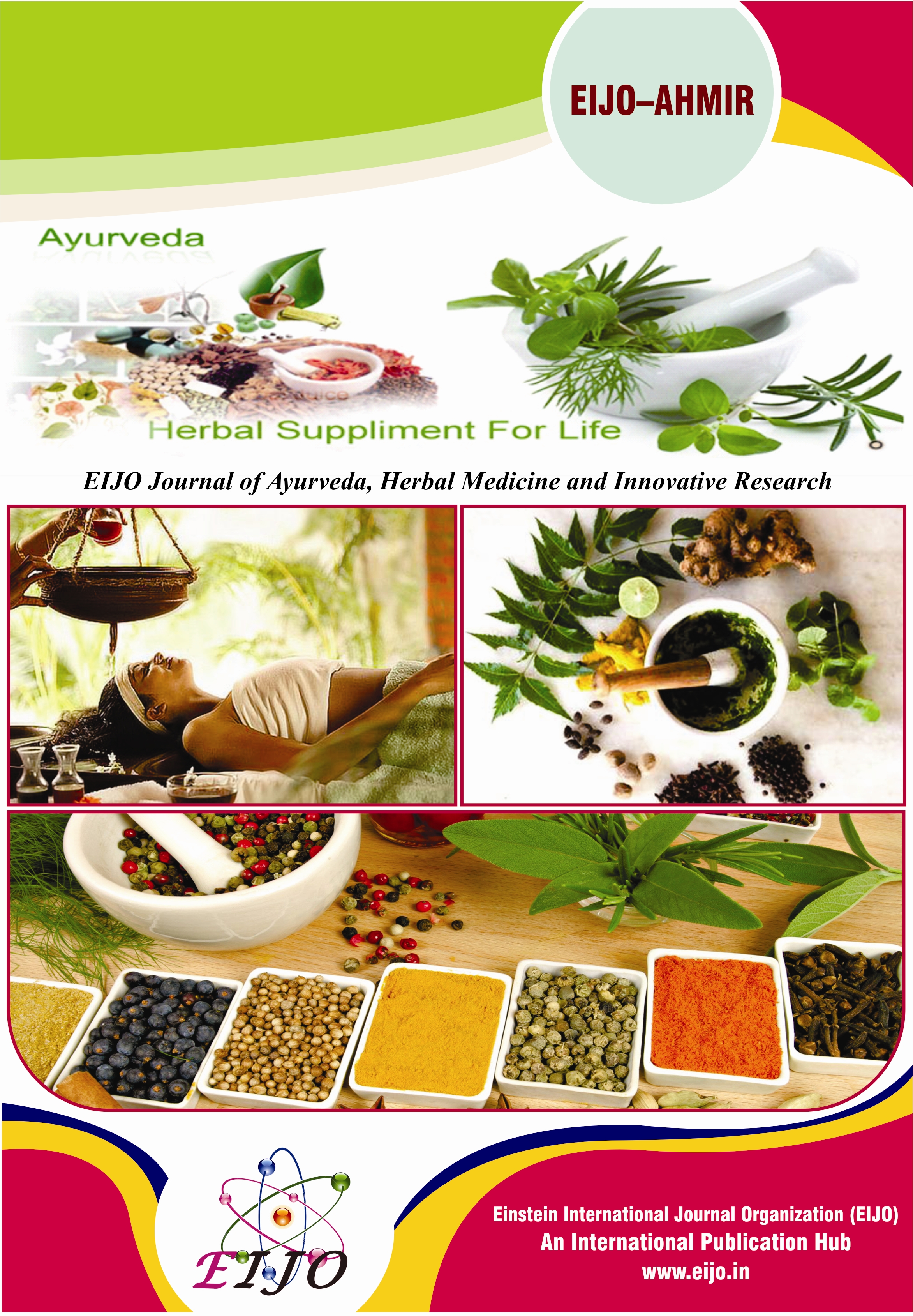JOURNALS || EIJO Journal of Ayurveda, Herbal Medicine and Innovative Research (EIJO – AHMIR) [ ISSN : 2456 - 530X ]
Abstract
Ayurveda is the life science with prime goal of promotion of health and prevention of disease in healthy individuals and alleviation of disease in diseased. The basic principles of Ayurveda are necessary to be understood for the knowledge of this science. These basic principles are derived from various Darshan(philosophy). Ayurvediya Pharmacokinetics depends on the knowledge of these fundamental principles. These basic principles are Rasa, Guna (attribute), Virya, Vipaka and Prabhav. Each of these has its own importance in understanding Ayurvediya principles. Among these basic principles knowledge of Guna is of vital importance because these are very useful in knowing the mode of action of various Ayurvediya formulations and procedures. Hence hereby an effort is made to understand the Guna in detail and its importance.
Key words: Ayurveda, Darshan, Rasa, Guna, Prabhav.
[1]. Vachaspatyam (Birhat Sanskritabhidhanam) - Tarka Vachaspati Shri Taranath Bhattacharya, Chaukhamba Sanskrit Series Office, 1962, Vol.4 pg. no. 2600.
[2]. Aacharya Vidyaadhar Shukla and Prof. Ravi Dutt Tripathi, Carakasamhita of Agnivesa edited with Vaidyamanorama Hindi Commentary, Vol. 1, Reprint Edition, 2007; Chaukhambha Sanskrit Pratishthan, Delhi, Sutra Sthana, 1(51):23.
[3]. Aacharya Vidyaadhar Shukla and Prof. Ravi Dutt Tripathi, Carakasamhita of Agnivesa edited with Vaidyamanorama Hindi Commentary, Vol. 1, Reprint Edition, 2007; Chaukhambha Sanskrit Pratishthan, Delhi, Sutra Sthana, 26(36):366.
[4]. Kaviraj Ambikadutt Shastri, SushrutaSamhita edited with Ayurveda Tattva Sandipika, Vol 1st, Reprint edition, 2010 ; Chaukhambha Sanskrit Sansthan, Varanasi, Sharir Sthana, 1(1-5):1-2.
[5]. Aacharya Vidyaadhar Shukla and Prof. Ravi Dutt Tripathi, Carakasamhita of Agnivesa edited with Vaidyamanorama Hindi Commentary, Vol. 1, Reprint Edition, 2007; Chaukhambha Sanskrit Pratishthan, Delhi, Sutra Sthana, 1(49):19.
[6]. Aacharya Vidyaadhar Shukla and Prof. Ravi Dutt Tripathi, Carakasamhita of Agnivesa edited with Vaidyamanorama Hindi Commentary, Vol. 1, Reprint Edition, 2007; Chaukhambha Sanskrit Pratishthan, Delhi, Sharir Sthana, 1(31):680.
[7]. Kaviraj Atridev Gupta, Astang Hridayam of Vagbhata edited with Vidyotini Hindi Commentary, Reprint Edition, 2011; Chaukhambha Prakashan, Varanasi, Sutra Sthana, 1(18): 11.
[8]. Aacharya Vidyaadhar Shukla and Prof. Ravi Dutt Tripathi, Carakasamhita of Agnivesa edited with Vaidyamanorama Hindi Commentary, Vol. 1, Reprint Edition, 2007; Chaukhambha Sanskrit Pratishthan, Delhi, Sutra Sthana, 1(24):6.
[9]. Aacharya Vidyaadhar Shukla and Prof. Ravi Dutt Tripathi, Carakasamhita of Agnivesa edited with Vaidyamanorama Hindi Commentary, Vol. 1, Reprint Edition, 2007; Chaukhambha Sanskrit Pratishthan, Delhi, Sutra Sthana, 1(59):37, Viman Sthana, 8(98):64.
[10]. Aacharya Vidyaadhar Shukla and Prof. Ravi Dutt Tripathi, Carakasamhita of Agnivesa edited with Vaidyamanorama Hindi Commentary, Vol. 1, Reprint Edition, 2007; Chaukhambha Sanskrit Pratishthan, Delhi, Sutra Sthana, 26(29):364.
[11]. Kaviraj Atridev Gupta, Astang Hridayam of Vagbhata edited with Vidyotini Hindi Commentary, Reprint Edition, 2011; Chaukhambha Prakashan, Varanasi, Sutra Sthana, 46(521): 288.



